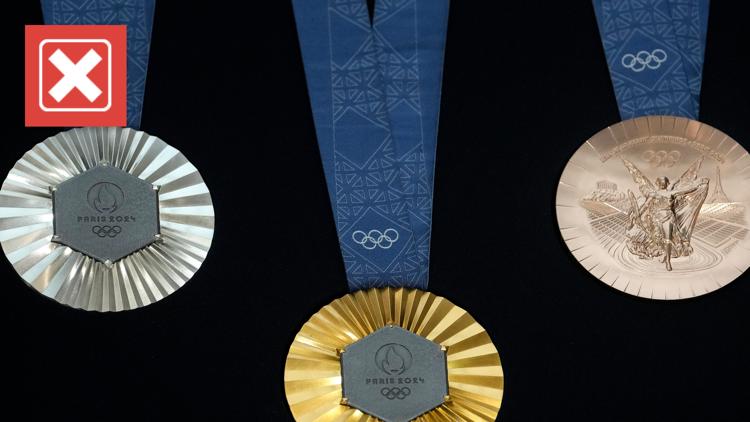Olympic gold medals are the most coveted medals handed out during the Olympic Games.
But some people are wondering if those medals are actually made from solid gold. A popular Google search over the last week asks what an Olympic gold medal is primarily made of.
THE QUESTION
Are Olympic gold medals made out of solid gold?
THE SOURCES
THE ANSWER
No, Olympic gold medals are not made out of solid gold.
WHAT WE FOUND
While Olympic gold medals are made with real gold, that’s not the only metal present in the medals. The medals are primarily silver, and the gold is gilded on top.
The Paris 2024 Olympic organizing committee says the gold and silver medals for the Games are made from solid silver, and that six grams of gold are used in the first-place medals. The third-place medals are made from a copper alloy, tin and zinc.
For every Olympics, the medals are made by the organizing committee for that year’s Games. However, the medals must follow guidelines set by the International Olympic Committee (IOC).
These guidelines require the first and second-place medals be made of silver of at least 925-1000 grade, and that the first-place medals be gilded in at least six grams of gold.
The Tokyo 2020 gold medals were made with “more than 6g of gold plating on pure silver,” while the silver medals were made of pure silver and the bronze medals were made of red brass that’s 95% copper and 5% zinc, according to the IOC.
While the first-place medals for the 1904 and 1908 Olympics were actually made of solid gold, the Olympic Games have made the medals from silver plated with gold since the 1912 Olympics.
The Paris 2024 medals are unique in that they also contain the original iron from the Eiffel Tower, the Paris 2024 organizing committee says. Every Paris 2024 medal — gold, silver or bronze — has a hexagon at its center made from the iron.



